

In the afternoon I moved a scorpion, belonging to the genus Centruroides, to a larger enclosure. The scorpion was wild collected as a juvenile in the state of Chiapas, close to the city of Tapachula the 4th of February 2006. The scorpion had been several time through ecdysis: the casting off of the old exoskeleton (molting) - the most recent one about a month ago. I am quite sure that this scorpion is a Centruroides species, possible Centruroides gracilis, a species that's in my experience abundant in several states of Mexico.
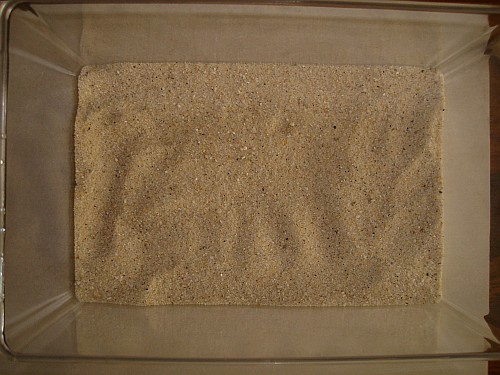
I kept the scorpion in a small (15.5 x 7.5 x 10 cm, 1 liter) clip box I bought some time ago to house baby scorpions. The new enclosure is also a clip box but its dimensions are 19 x 12 x 9 cm.
First I put a layer of about 2.5 cm (one inch) of white sand in the enclosure. I had bought several bags of white sand some time ago in a pet shop. I rather would have used a bit darker sand because the scorpion is dark brown colored. It might sound odd to use dark sand with a dark scorpion but I prefer to copy the natural micro habitat as close as possible and this scorpion was found near a river, under a large stone on dark colored soil.

Next, I pushed a large flat stone into the white sand. This species doesn't burrow but prefers to hide under stones in small spaces that are available. So after I had pushed quite strong I removed the stone.

I put five smaller stones at the edge of the impression made by the larger stone. I made sure that some stones touched the bottom of the scorpion enclosure and hence would carry the larger stone when I put it back. But first I removed some sand to provide a nice and cosy hiding place for the scorpion.
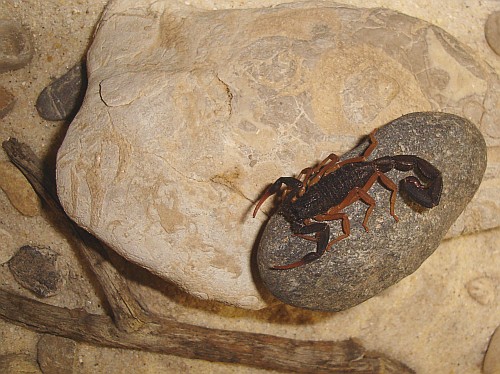
Next, I put the large stone back into place and used some sand to close the holes. I added more small stones around the hiding place, and also added a small piece of dry wood.
Then I moved the scorpion from its old enclosure to the new one. Since it was resting on a stone I just carefully picked up the stone with the scorpion and moved it over to the new enclosure. Warning: don't use this technique yourself, you seriously risk getting stung or drop the scorpion.
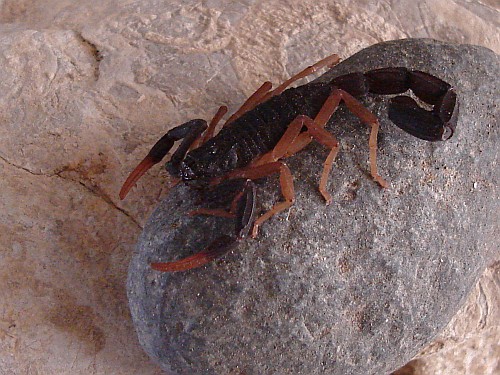
After the scorpion had left the stone I used to transport it, I removed the stone from the enclosure and put the lid on. As you could have read above, the enclosure is not very high, and scorpions are able to "stand" on their tail and reach much higher than could be guessed by just looking at them walking around.
As you can see the legs and the ends of the claws of this scorpion species have a very nice orange brown color which gives a nice contrast with the much darker brown of the rest of the body. Some Centruroides gracilis juveniles have this or similar coloration yet its not a good key to identify what species this is. Like I wrote earlier Centruroides gracilis is my best guess.

Shortly after the scorpion had discovered the hiding place I had created for it and was gone from view I took some more photos to give an impression of the (almost) finised scorpion enclosure. The hiding place has two entries, one in the front of the enclosure - lower part of the photo to the right of the center - and one on the left side - close to the top left corner of the photo.
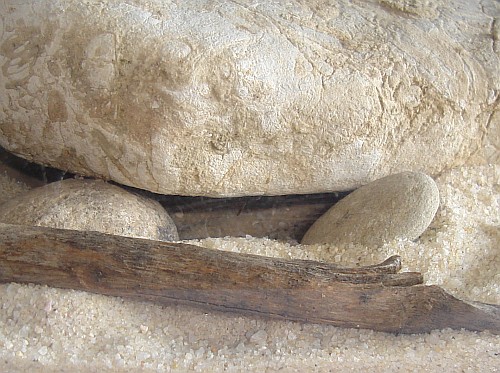
After I took the above photo I decided that the front entry was a bit too open to the "outside world" so I put a flat stone in front of the opening, making the entry a bit smaller but with still sufficient space for the scorpion to enter its hiding place.
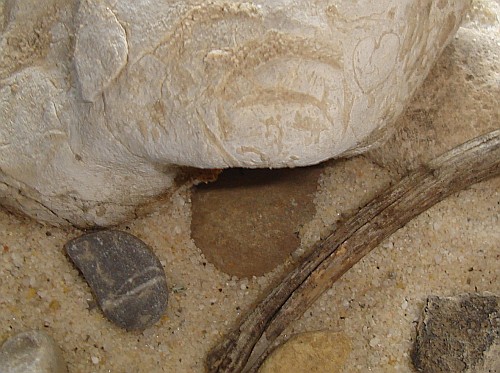
To provide water to the scorpion I put a small bottle cap in one corner of the enclosure and filled it with water. Then I sprayed the enclosure with water. This Centruroides species prefers a not too wet enclosure but certainly not a dry one. I will mist its enclosure once a week or more often when it's required. In my experience the sand never must entirely dry out, again assuming that this wild collected specimen is a Centruroides gracilis or requires a similar micro habitat.
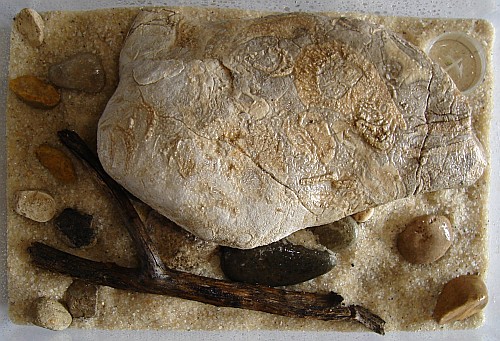
The previous enclosure had a lid with 5 holes, each with a diameter of 5 mm, drilled into it. The lid of the new enclosure has a rectangle of 12.5 x 7.5 cm cut out. The hole is covered with a fine metal wire mesh - metal since house crickets can chew through a plastic mesh - glued to the inside of the lid with a glue gun.
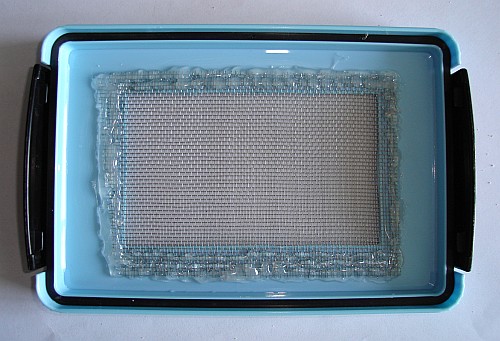
After I had misted the scorpion enclosure, taken photos of the lid, and closed the enclosure I put it in its place on one of the shelves in my office. In the photo below you can see it between an enclosure of a Centruroides flavopictus flavopictus - a scorpion Esme found in her towel last year - and an enclosure housing an adult male Centruroides gracilis we captured in Zempoala more than two years ago when my mother was visiting us.
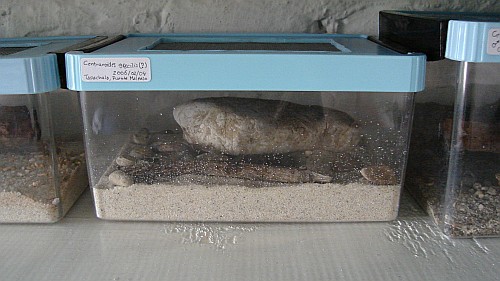
Later in the evening I took several photos of the scorpion from Chiapas most after I had fed it an adult male house cricket.